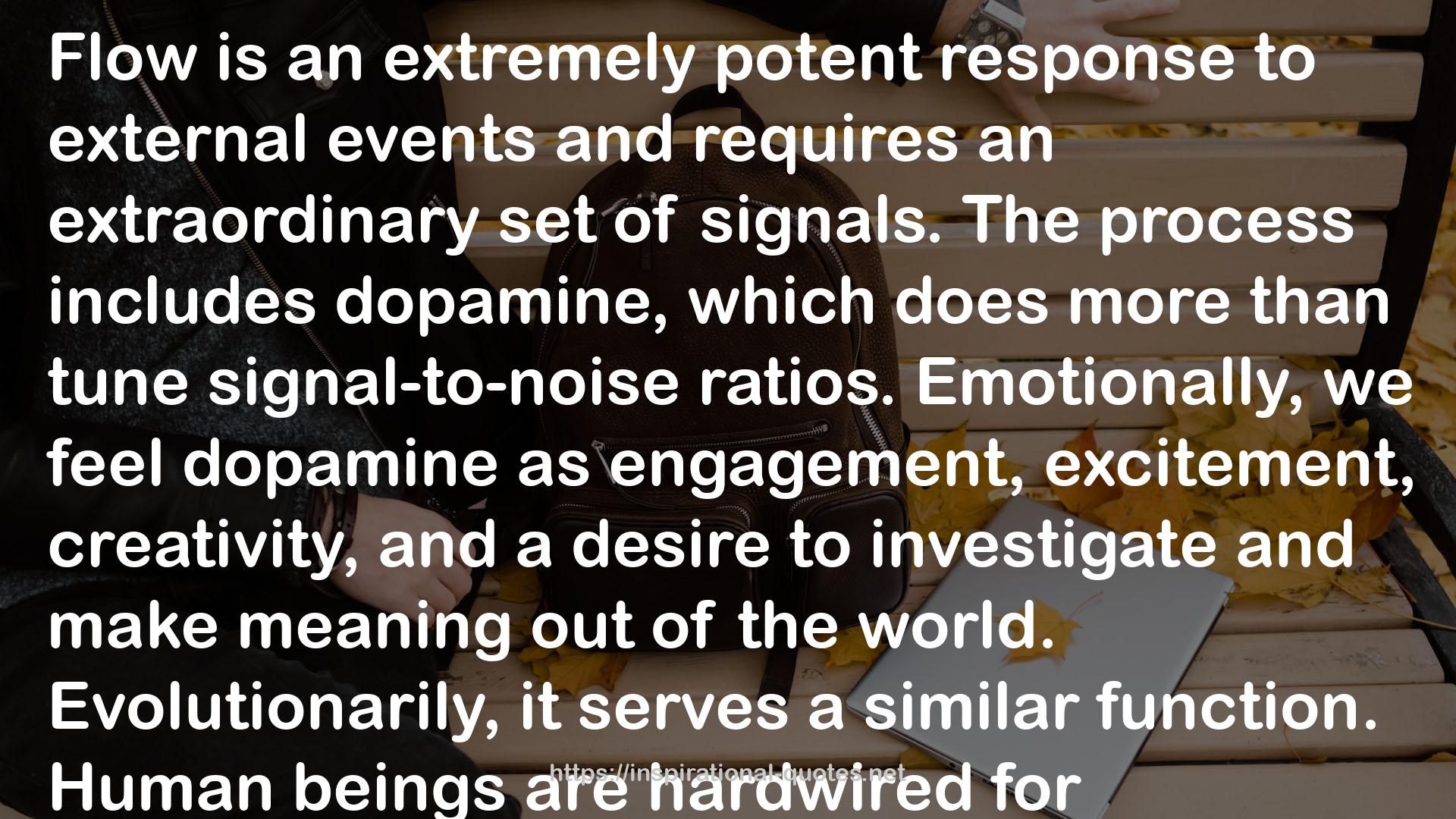" Flow is an extremely potent response to external events and requires an extraordinary set of signals. The process includes dopamine, which does more than tune signal-to-noise ratios. Emotionally, we feel dopamine as engagement, excitement, creativity, and a desire to investigate and make meaning out of the world. Evolutionarily, it serves a similar function. Human beings are hardwired for exploration, hardwired to push the envelope: dopamine is largely responsible for that wiring. This neurochemical is released whenever we take a risk or encounter something novel. It rewards exploratory behavior. It also helps us survive that behavior. By increasing attention, information flow, and pattern recognition in the brain, and heart rate, blood pressure, and muscle firing timing in the body, dopamine serves as a formidable skill-booster as well. Norepinephrine provides another boost. In the body, it speeds up heart rate, muscle tension, and respiration, and triggers glucose release so we have more energy. In the brain, norepinephrine increases arousal, attention, neural efficiency, and emotional control. In flow, it keeps us locked on target, holding distractions at bay. And as a pleasure-inducer, if dopamine’s drug analog is cocaine, norepinephrine’s is speed, which means this enhancement comes with a hell of a high. Endorphins, our third flow conspirator, also come with a hell of a high. These natural “endogenous” (meaning naturally internal to the body) opiates relieve pain and produce pleasure much like “exogenous” (externally added to the body) opiates like heroin. Potent too. The most commonly produced endorphin is 100 times more powerful than medical morphine. The next neurotransmitter is anandamide, which takes its name from the Sanskrit word for “bliss”—and for good reason. Anandamide is an endogenous cannabinoid, and similarly feels like the psychoactive effect found in marijuana. Known to show up in exercise-induced flow states (and suspected in other kinds), this chemical elevates mood, relieves pain, dilates blood vessels and bronchial tubes (aiding respiration), and amplifies lateral thinking (our ability to link disparate ideas together). More critically, anandamide also inhibits our ability to feel fear, even, possibly, according to research done at Duke, facilitates the extinction of long-term fear memories. Lastly, at the tail end of a flow state, it also appears (more research needs to be done) that the brain releases serotonin, the neurochemical now associated with SSRIs like Prozac. “It’s a molecule involved in helping people cope with adversity,” Oxford University’s Philip Cowen told the New York Times, “to not lose it, to keep going and try to sort everything out.” In flow, serotonin is partly responsible for the afterglow effect, and thus the cause of some confusion. “A lot of people associate serotonin directly with flow,” says high performance psychologist Michael Gervais, “but that’s backward. By the time the serotonin has arrived the state has already happened. It’s a signal things are coming to an end, not just beginning.” These five chemicals are flow’s mighty cocktail. Alone, each packs a punch, together a wallop. "
― Steven Kotler , The Rise of Superman: Decoding the Science of Ultimate Human Performance
